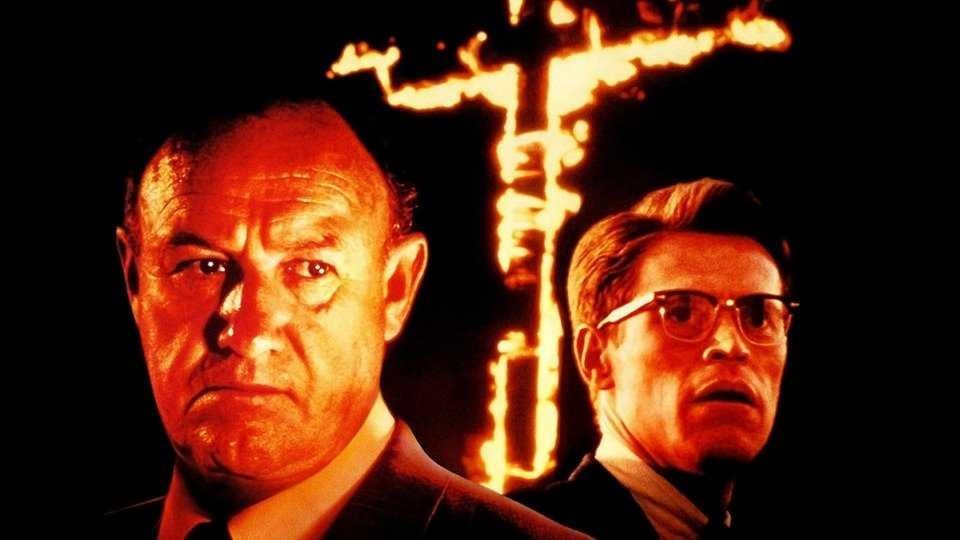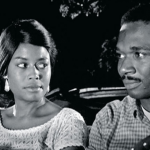
During the first week of each month, Francey Russell (Barnard/Columbia) will offer a philosophical reflection on film: a single film, a director, a technique, a genre, an author, etc. Plots will be discussed, hence spoilers. See all of the installments here.
NOTHING BUT A MAN (1964),
DIRECTED BY MICHAEL ROEMER
CO-WRITTEN BY MICHAEL ROEMER AND ROBERT M. YOUNG
Michael Roemer made Nothing But a Man in 1964. The film is set in a town near Birmingham, Alabama, but they had to shoot in New Jersey, over worries that filming their movie would be too disruptive in the South. At the distribution stage, theaters refused to show it. As Roemer recalls, “In Philadelphia, I asked the exhibitor why it was playing in the suburbs, and how are black people supposed to get there to see it? And he said, ‘We don’t want them.’” Decades later, the film was selected for preservation at the Library of Congress in 1993, and re-released on DVD in 2004. Still, and despite critical praise by the critics who see it, it hasn’t been taken up as one of the essential films in the American canon, which is a scandal. It is brilliantly acted, the script is spare and humane, and it has an immediately distinctive visual language of high contrast black and white photography, consisting largely in close-ups, with no establishing shots and almost no wide shots. By staying close rather than pulling back, an entire form of life is displayed on screen. As Terri Francis puts it in her essay on the film, “the face is the landscape, the world writ small.”
The film’s action is almost entirely conversation, and almost entirely between black characters. Duff (Ivan Dixon) works as a section hand on a railroad, and meets Josie (Abbey Lincoln) at a church picnic that he wanders into on a night off. During his first interactions with Josie, whom he obviously likes so much and so straightforwardly, Duff is guarded in a way that clearly runs very deep, but he is also friendly in an easy, if cautious, way. He tells Josie that he does not understand why she’s hanging out with him. He says he moves around a lot with work because it keeps him out of “trouble,” a vague, capacious word that recurs throughout the film, as though it were a beat holding the film’s rhythm. “I don’t get on so well most places,” he says. And also: “They can’t get to you if you keep moving.” Josie offers a simple explanation of why she wants to see him again: “I thought we might have something to say to each other.” Few films I’ve seen have better captured that form of pure and instant attraction where all you know is that you just want to be around the other person, to find out what they have to say, partly because you feel you know them already in an ancient way. Another beautiful instance of this is Nicholas Ray’s They Live By Night (1948), about another young couple in cautious love who also have to keep moving. In both cases the mutual affection is so natural, so palpable, so immediate, and yet so clipped. In both cases but in completely different ways, the world makes good love impossible.
* * * * *
There is an absolute difference between films that take up racism as a topic, and films that attend to racism as a human reality. In making an issue of racism, the former type of film contains it as an event or interaction, where it is confined within a stretch of time or within a bounded space. Such a film assures that there is some wider world, either through an outsider character, often white, or by marking off parts of the country as essentially discrete, often North and South. Within this expansive world, there is then a local problem—racism—which one can encounter, learn from, and also leave behind (leave the town, resolve the problem, etc.). Cinema is very well suited to this containment approach: racism as a problem or issue or local horror can be rendered visually, hence from a distance, in arresting images—see the promotional image for Mississippi Burning (1988)—or in scenes so explosively violent that they cannot be sustained; it must, of necessity, end.

promotional image for Mississippi Burning (1988)
The more spectacular the violence, the more reassuring the film. There is more to the world than this. One walks away.
Nothing But a Man is not violent, in this way. The violence that pervades this film is steadier and quieter. It is the heavy atmosphere of trouble. There is a never-explained bullet hole in the passenger window of Duff’s car; there is the constant uncertainty about employment; the sense of dread and danger that arise around the prospect of love. Josie says she isn’t dating anyone in town because “most of the men I know, they’re kind of sad.” Acute violence is not shown but recalled matter-of-factly, as a part of reality: “It’s better than it used to be. Eight years ago they still had a lynching here.” Josie says this to Duff as they drive through town on their first date. Critics have noted that the film never mentions the Civil Rights movement despite being set about ten years in. In Nothing But a Man people talk about racism without words like “racism.” They just talk about life.
This film is not interested in spectacles or events. It does not tether its time and space to any specific moment in American history (to do so would again make an “issue” of its subject, quarantining it in time). What the film attends to are different human beings strategizing with a blunt reality. Josie has found a way to not just survive but live; she says, “They can’t touch me inside” (which sends Duff into a rare and brief rage, devastated and exhausted). Josie’s father, a preacher, is making a life by working with the whites in power; he talks to Duff about trouble before noting that they have “nothing to say to each other.” Duff’s father is in Birmingham drinking himself to death. Duff nearly breaks from this world. In an otherwise very still film, there are two shots of Duff walking through the city street alone, the camera following alongside as he stares at nothing but keeps moving. This kind of violence can, in fact, be sustained. But so can love. The film shows what this can look like, and what staying with love can ask of a person who has every reason to fear it.
* * * * *
It is actually quite rare to find a film that attends to human reality, of any kind, with seriousness, which is to say love. It is this film’s quiet and attentive love for its characters that makes the threat to their love so gutting. To see a film this good is a gift. It is to experience an occasion in the history of the medium. But the life of this film is caught up with the world that it shows. So one sees this film accompanied by an awareness that it is generally not seen, not well known or widely celebrated in American cinema. It’s not that this is surprising, but it is still staggering, and it inflects the viewing experience itself. The world is writ small in the film’s own history, it’s almost not being made, it’s almost not being seen. To see this film is to experience an occasion missed.



August 20, 2022 at 2:44 am
To review the film, in 2020, without reference to the fact that it is depiction of black masculinity and black femininity, written by two white man and direct by a white man, seems pretty incredible to me.
THROWBACK MOVIE REVIEW: NOTHING BUT A MAN (1964) AND DEPICTIONS OF RACISM March 7, 2020 by Aesthetics for Birds | https://aestheticsforbirds.com/2020/03/07/throwback-movie-review-nothing-but-a-man-1964-and-depictions-of-racism/